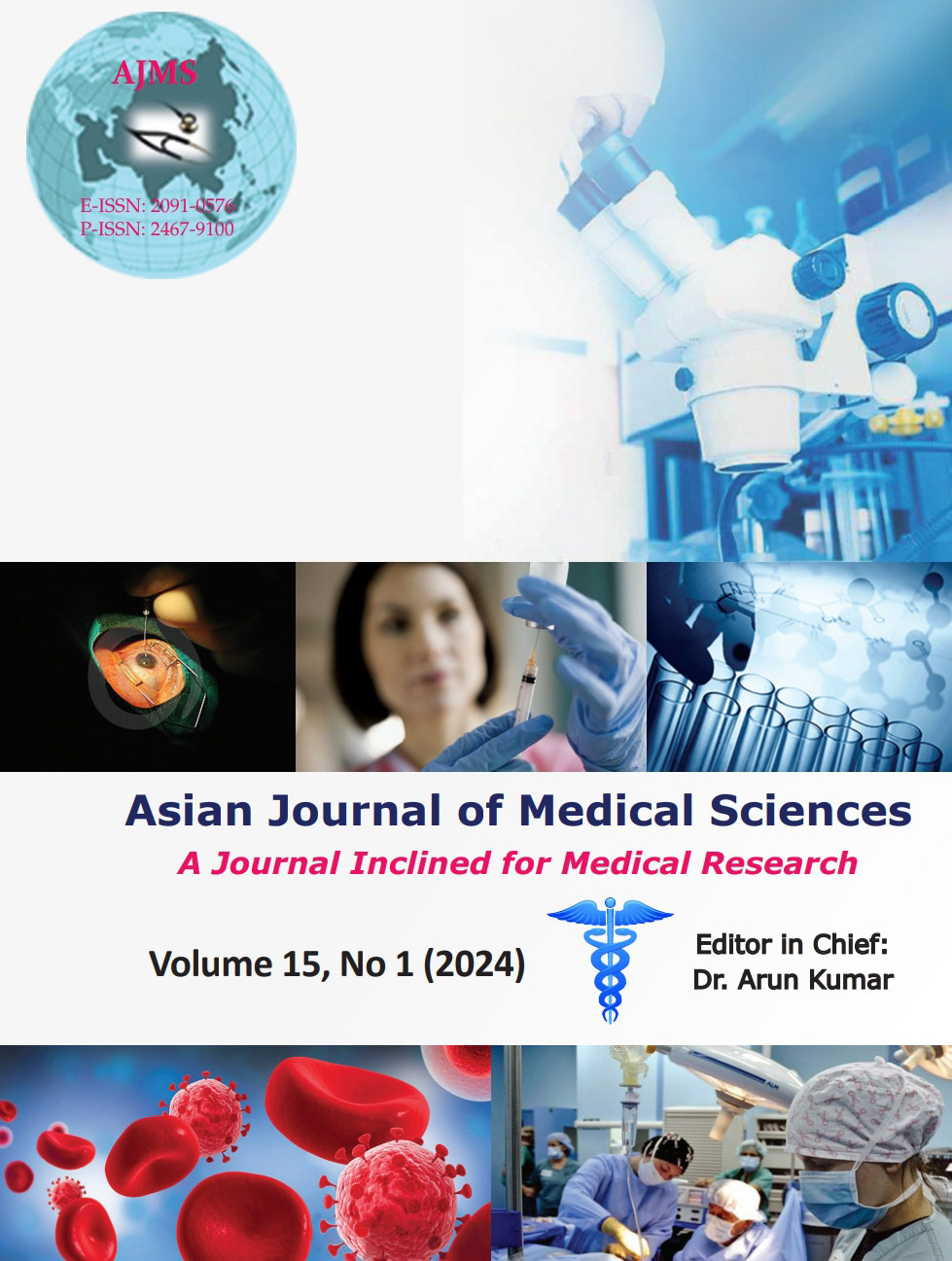Role of fine-needle aspiration cytology in the evaluation of salivary gland lesion with utilization of Milan system for reporting
Keywords:
Fine-needle aspiration cytology; Milan system for reporting salivary gland cytopathology; Salivary gland lesionAbstract
Background: Fine-needle aspiration cytology (FNAC) plays a role in the pre-operative diagnosis of salivary gland mass lesion. Salivary gland neoplasm accounts for 6% of all head and neck tumors. It is widely used safe and relatively non-traumatic procedure that can quickly provide important information. “The Milan system for reporting salivary gland cytopathology” (MSRSGC) was introduced, providing a guide for diagnosis and management according to the risk of malignancy (ROM) in different categories.
Aims and Objectives: The objectives of the study are as follows: (1) To evaluate different types of salivary gland lesion in tertiary care center. (2) To see application of Milan system in the present scenario.
Materials and Methods: A hospital-based and prospective study was conducted between March 2021 and September 2022 on all cases of salivary gland lesions who were referred for FNAC to the Department of Pathology at Netaji Subhash Chandra Bose Medical College Hospital in Jabalpur, Madhya Pradesh. In the present study, we categorize salivary gland cytopathology result as per Milan system (MSRSGC) and calculated diagnostic accuracy and ROM in each category of Milan system (MSRSGC).
Results: Seventy seven cases distributed according to Milan category as follows: Non-diagnostic (ND) (2.59), non-neoplastic (NN) (29.33%), atypia of undetermined significance (AUS) (1.29%), 4a. Benign (29.87%), 4b. Salivary gland neoplasm of uncertain malignant potential (SUMP) (1.29%), suspicious of malignancy (SOM) (1.29%), and malignancy (10.38%). Out of 77 cases, histological follow-up was available in 27 cases and the ROM was calculated. The ROM for each category of the Milan system is as follows: ND (0%), NN (6.66%), AUS (100%), 4a. Benign (9.09%), 4b. SUMP (0%), SOM (100%), and Malignancy (100%). The sensitivity, specificity, positive predictive value, negative predictive value, and diagnostic accuracy were 77.7%, 100%, 100%, 92.59%, and 94.11%.
Conclusion: FNAC of the salivary gland lesions is a safe, minimum invasive, and reliable diagnostic procedure. The Milan system of reporting is a risk stratification system which can improve the overall effectiveness of reporting.
Downloads
Downloads
Published
How to Cite
Issue
Section
License
Copyright (c) 2023 Asian Journal of Medical Sciences

This work is licensed under a Creative Commons Attribution-NonCommercial 4.0 International License.
Authors who publish with this journal agree to the following terms:
- The journal holds copyright and publishes the work under a Creative Commons CC-BY-NC license that permits use, distribution and reprduction in any medium, provided the original work is properly cited and is not used for commercial purposes. The journal should be recognised as the original publisher of this work.
- Authors are able to enter into separate, additional contractual arrangements for the non-exclusive distribution of the journal's published version of the work (e.g., post it to an institutional repository or publish it in a book), with an acknowledgement of its initial publication in this journal.
- Authors are permitted and encouraged to post their work online (e.g., in institutional repositories or on their website) prior to and during the submission process, as it can lead to productive exchanges, as well as earlier and greater citation of published work (See The Effect of Open Access).




